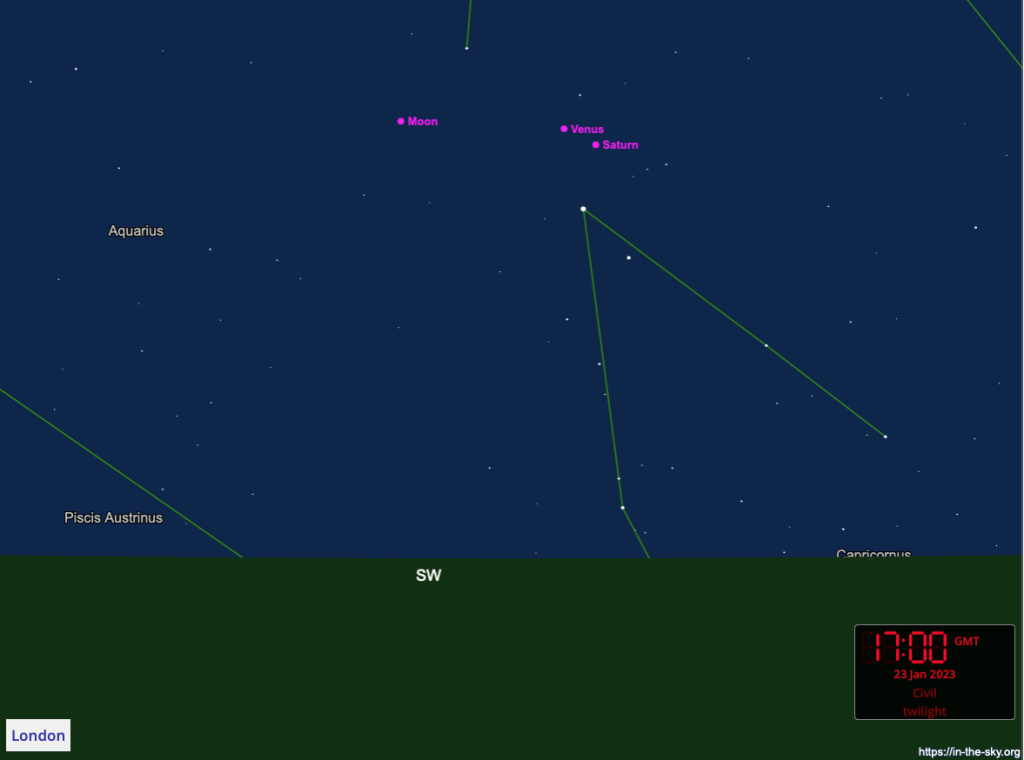2023 January 16
Observer’s Challenge – Conjunction of Venus and Saturn on 22-23 January

On 22 January a close conjunction of Venus and Saturn will be visible, low down in the western sky after sunset.
Faster-moving Venus, moving eastwards, will pass about 28 minutes of arc south of Saturn that evening, in the constellation of Capricornus, the two planets fitting easily in a low-power telescope field. From London, the pair will be 11º high in the south-west around 17:00, 30 minutes after sunset, in civil twilight.
Saturn at magnitude +0.7 will probably not be visible to the naked eye in the bright sky, but it will be visible in binoculars or a telescope, and the brilliant Venus will provide an accurate guide to it, with Saturn less than a Moon’s breadth above Venus. Venus will be gibbous phase, 93% illuminated, and 11 arc seconds in diameter. Saturn will be bigger but much fainter, the globe 15.5 arc seconds in diameter and rings 35 arc seconds across. It will be challenging to image the two together because of the large brightness difference. It may be necessary to combine different exposure lengths. A red filter or infra-red filter may increase the contrast agains the blue sky.

On the following evening, 23 January, Venus will be east of Saturn and lie slightly above it, the pair not being so close as on the 22nd, but still within the a single field for many telescopes. Additionally, a two-day old very thin crescent Moon will lie 4º east of Venus. The Moon may be hard to spot with the naked eye, but, again, using Venus as a guide, should be visible in binoculars. Again, to image it may require a much longer exposure than for Venus because of the lower surface brightness.

The challenge is to make a drawing or take an image of the scene on 22 or 23 January and post it to your members’ page on this website. I wish you clear skies!
| The British Astronomical Association supports amateur astronomers around the UK and the rest of the world. Find out more about the BAA or join us. |
